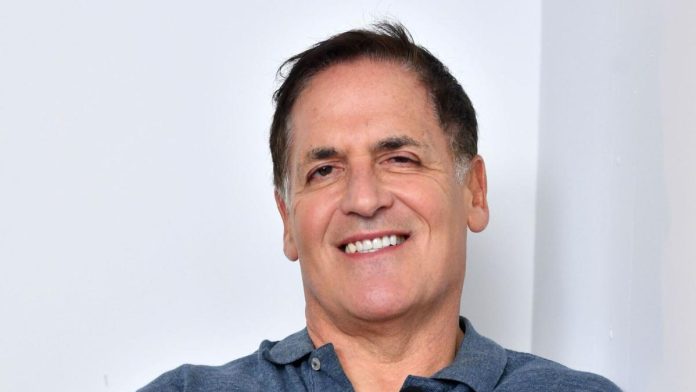As President Donald Trump kicked off a birthday military parade on the streets of Washington, DC, what’s estimated as roughly 2,000 events were held across the US and beyond — protesting Trump and Elon Musk’s evisceration of government services, an unprecedented crackdown by Immigration and Customs Enforcement (ICE), and countless other actions from the administration in its first five months. Held under the title “No Kings” (with, as you’ll see, one conspicuous exception), they’re the latest in several mass protests, following April’s Hands Off events and a wave of Tesla Takedown demonstrations in March.
As The Verge’s Tina Nguyen went to downtown DC, we also sent reporters to No Kings demonstrations spanning the country, plus a “No Tyrants” event in the UK. How would they unfold after promises of “very heavy force” against protesters in the capital, after the deployment of thousands of military troops in a move a judge has bluntly called illegal, and after promises to “liberate” the city of Los Angeles from its “burdensome leadership” by local elected officials? What about the overnight killing of a Minnesota Democratic state representative and her husband, and the shooting of a Democratic state senator and his wife?
The answer, at the events we attended, was fairly calmly — even against a backdrop of chaos.
Downtown Los Angeles, California
An inflatable baby Donald Trump, dressed in a diaper, hovered over throngs of people rallying outside of Los Angeles City Hall. Demonstrators outnumbered clumps of California National Guard members in fatigues posted up along sidewalks.
“Go home to your families, we don’t need you in our streets,” one young person wearing a long braid down her back tells them while marching past. “Trump come catch these hands foo!” the back of her sign reads. I can’t see what the front says, but I can tell there’s an empty bag of Cheetos pasted to it.
The big baby joins the march, floating through the streets of Downtown LA over demonstrators. A flatbed truck rolls ahead of it, the band — maybe LA’s own Ozomatli? — singing “We don’t like Trump” to the tune of “We Want The Funk.”
Ducking inside Grand Central Market from the march, I talk to Puck and Twinkle Toes — two demonstrators in line for the public restrooms. Twinkle Toes tells me she’s part of an activist clown collective called Imp and Circumstance, wearing pink and white clown makeup and a striped pink and white bow wrapped around a loose hair bun atop her head. She’s here exercising her right to free speech, she says.
Demonstrators in Los Angeles marched alongside an inflatable Donald Trump baby dressed in a diaper.
“The more people that are out here, the more we know that this is not okay. That we don’t want an autocrat. We want democracy,” Puck tells me, adding that the Pride March in Hollywood last weekend was “nothing but love and sunshine” despite protests and burning driverless cars making headlines in downtown. “The news tries to make you think all of LA is rioting. It’s not.” Puck says.
Back out on the streets, a young man quickly writes “Fuck ICE” on a black wall with white spray paint before a group of older demonstrators wearing floppy hats shushes him away — warning him that tagging will only attract more law enforcement.
Further along, another older man with tufts of white hair sticking out under his Lakers cap walks stiffly and slowly along under the summer sun. A Mexican flag draped across his shoulders, he crosses Hope Street. A young man wearing a Nike cap makes his way over to ask if he wants water; the old man accepts a bottle and keeps walking without stopping. The march has looped around downtown, and is coming to an end back at City Hall. As I make my way to my bus stop, a line of police vehicles — sirens blasting — whizzes past me, back toward the crowd still gathering around City Hall.
The Los Angeles Police Department issued a dispersal order for parts of downtown Los Angeles later in the afternoon, citing people “throwing rocks, bricks, bottles and other objects.” Law enforcement reportedly cleared crowds using gas, and the LAPD authorized the use of “less lethal” force.
Four different “No Kings” protests in the greater Portland area on Saturday drew massive crowds of tens of thousands across the city. Various activists, government officials, and representatives for politicians spoke at the rallies, which also featured music and live performances. (One advertised free drag shows.)
Protesters of all ages came with dogs, strollers, flags, banners, and hand-made signs. At the downtown waterfront, some tourist boats appeared to still be departing, but the bike rental stand (which also sells ice cream) was closed for the day with a hand-lettered explanation reading “No crowns, no thrones, no kings” and “Americans against oligarchy.” Women appearing to be organizers passed out free American flags; many attendees came with their own American flags modified to fly upside down.
Most protesters brought signs expressing a wide range of sentiments on the theme of “No Kings.” Some signs were surprisingly verbose (“If the founders wanted a unitary executive (a king) we’d all still be British”) while others were more succinct (“Sic semper tyrannis”). Others opted for simple images, such as a picture of a crown crossed out, or — less frequently — a guillotine.
The waterfront park area was filled with people from the shoreline to the curb of the nearest street, where protesters held up signs to passing cars that honked in approval. The honking of a passing fire truck sent the crowd into an uproarious cheer.
Portland is about a thousand miles from the border with Mexico, but the flag of its distant neighbor nation has emerged as protest iconography in solidarity with Los Angeles. The rainbow pride flag was flown as often as the Mexican flag. Military veterans were scattered throughout the crowd, some identifying themselves as having seen action in conflicts spanning from Vietnam to Afghanistan. Emanuel, an Air Force veteran, told me that he had turned out in defense of the constitution and due process, saying, “Nobody has any rights if one person doesn’t have any rights.”
Anger was directed at ICE and the mass deportations all throughout the day, in signage, in chants, and in rally speeches.
The previous night, about 150 people protested at a local ICE facility — coincidentally located by the Tesla dealership — a mile south of downtown, near a highway exit. The ICE facility protests, which have been continuous for some days, have been steadily building up. A couple of “No Kings” signs were present on Friday. (The following day, a handful of “Chinga la migra” signs would show up at the “No Kings” protests). Demonstrators stood on the curb urging passing cars to “Honk if you hate fascists,” successfully eliciting car horns every few seconds, including some from a pristine white Tesla.
Federal law enforcement in camo and helmets, their faces obscured, maced and shot at protesters with pepper balls, targeting them through the gates and sniping at them from the rooftop of the building. A handful of protesters — many wearing gas masks and respirators — formed phalanx formations in the driveway, wielding umbrellas and handmade shields.
On Saturday, a speaker at one of the “No Kings” rallies advertised the occupation of the ICE facility, saying, “We’re a sanctuary city.” The crowd — replete with American flags both upside down and right side up — cheered.
Nearly every intersection on Pasco County’s State Road 54 looks the same: a cross-section of strip malls, each anchored by a Walmart or Target or Publix, surrounded by a mix of restaurants, nail salons, and gas stations. It’s not an environment that is particularly conducive to protests, but hundreds of people turned out in humid, 90-plus degree weather anyway. The overall size of the crowd is hard to determine, but it’s larger than I — and other attendees — anticipated, given the local demographics. (Trump won 61 percent of the vote in Pasco County in 2024.)
New Port Richey, FL.Image: Gaby Del Valle
Everyone is on the sidewalk; an organizer with a megaphone tells people to use crosswalks if they’re going to attempt to brave the six-lane highway. Two days earlier, Governor Ron DeSantis said Floridians could legally run over protesters on the street if they feel “threatened.”
New Port Richey, FL.Image: Gaby Del Valle
So far, most drivers seem friendly. There are lots of supportive honks. One woman rolls down her window and thanks the protesters. “I love you! I wish I could be with you, but I have to work today!” she yells as she drives away. Not everyone is amenable. A man in a MAGA hat marches through the crowd waving a “thin green line” flag and yelling “long live the king!” as people in the crowd call him a traitor. A pickup truck drives by blasting “Ice Ice Baby,” waving another pro-law enforcement flag.
The protesters have flags, too: American flags large and small, some upside down; Mexican; Ukrainian; Palestinian; Canadian; different configurations of pride and trans flags. Their signs, like their flags, illustrate their diverse reasons for attending: opposition to Trump’s “big beautiful” funding bill, DOGE’s budget cuts, and ICE arrests; support for immigrants, government workers, and Palestinians. One woman wears an inflatable chicken suit. Her friend pulls an effigy of Trump — dressed to look both like an eighteenth-century monarch, a taco, and a chicken — alongside her.
New Port Richey, FL.Image: Gaby Del Valle
Most of the demonstrators are on the older side, but there are people of all ages in attendance. “I thought it was going to be maybe 20 people with a couple of signs,” Abby, 24, says, adding that she’s pleasantly surprised at both the turnout and the fact that most of the protesters are of retirement age. Abe, 20, tells me this is his first protest. Holding a sign that says “ICE = GESTAPO,” he tells me he came out to support a friend who is Mexican. Three teenagers walk by with signs expressing support for immigrants: “While Trump destroys America, we built it.” “Trump: 3 felonies. My parents: 0.”
As I drive away, I notice nine counter-protesters off to the side, around the corner from the main event. They wave their own flags, but the demonstrators seemingly pay them no mind.
Historic Filipinotown, Los Angeles
Wearing a camo baseball cap — “Desert Storm Veteran” emblazoned on the front — Joe Arciaga greets a crowd of about 100 people in Los Angeles’ Historic Filipinotown around 9:00AM.
“Good morning everyone, are you ready for some beautiful trouble?” Arciaga says into the megaphone, an American flag bandana wrapped around his wrist. The faces of Filipino labor leaders Philip Vera Cruz and Larry Itliong, who organized farm workers alongside Cesar Chavez, peer over his shoulders from a mural that lines the length of Unidad Park where Arciaga and a group called Lakas Collective helped organize this neighborhood No Kings rally.
“I’m a Desert Storm veteran, and I’m a father of three and a grandfather of three, and I want to work for a future where democracy is upheld, due process, civil rights, the preservation of the rule of law — That’s all I want. I’m not a billionaire, I’m just a regular Joe, right?”, he tells The Verge.
Joe Arciaga speaks to people at a rally in Historic Filipinotown, Los Angeles.Image: Justine Calma
“I am mad as hell,” he says, when I ask him about the Army 250th anniversary parade Donald Trump has organized in Washington, DC coinciding with the president’s birthday. “The guy does not deserve to be honored, he’s a draft dodger, right?” Arciaga says. He’s “livid” that the President and DOGE have fired veterans working for federal agencies and slashed VA staff.
Arciaga organizes the crowd into two lines that file out of the park to stand along Beverly Blvd., one of the main drags through LA. Arciaga has deputized a handful of attendees with security or medical experience with whistles to serve as “marshals” tasked with flagging and de-escalating any potentially risky situation that might arise.
Johneric Concordia, one of the co-founders of the popular The Park’s Finest barbecue joint in the neighborhood, is MCing out on Beverly Blvd. He and Arciaga direct people onto the sidewalks and off the asphalt as honking cars zip by. In between chants of “No hate! No fear! Immigrants are welcome here!” and rap songs from LA artist Bambu that Concordia plays from a speaker, Concordia hypes up the organizers. “Who’s cool? Joe’s cool?” He spits into the microphone connected to his speaker. “Who’s streets? Our streets!” the crowd cheers.
An hour later, a man sitting at a red light in a black Prius rolls down his window. “Go home!” he yells from the intersection. “Take your Mexican flag and go home!”
The crowd mostly ignores him. One attendee on the corner holds up his “No Kings” sign to the Prius without turning his head to look at him.
A few minutes later, a jogger in a blue t-shirt raises his fist as he passes the crowd. “Fuck yeah guys,” he says to cheers.
By 10AM, the neighborhood event is coming to a close. Demonstrators start to trickle away, some fanning out to other rallies planned across LA today. Concordia is heading out too, microphone and speaker still in hand, “If you’re headed to downtown, watch out for suspicious crew cuts!”
San Francisco, California
1/10Most of the crowd trickled out after 2pm, which was the scheduled end time of the protest, but hundreds stayed in the area.Image: Vjeran Pavic
London’s protest was a little different than most: it was almost entirely bereft of “No Kings” signs, thanks to the fact that about two miles away much larger crowds were gathered to celebrate the official birthday of one King Charles III.
“We don’t have anything against King Charles,” Alyssa, a member of organizers Indivisible London, told me. And so, “out of respect for our host country as immigrants,” they instead set up shop in front of the US embassy with a tweaked message: “No kings, no crowns” became “no tyrants, no clowns.”
London, UK.Image: Dominic Preston
Of the hundreds gathered, not everyone got the memo, with a few painted signs decrying kings and crowns regardless, and one brave Brit brandishing a bit of cardboard with a simple message: “Our king is better than yours!”
London, UK.Image: Dominic Preston
Still, most of the crowd were on board, with red noses, clown suits, and Pennywise masks dotted throughout, plus costumes ranging from tacos to Roman emperors. “I think tyrants is the better word, and that’s why I dressed up as Caesar, because he was the original,” says Anna, a Long Island native who’s lived in London for three years. “Nobody likes a tyrant. Nobody. And they don’t do well, historically, but they destroy a lot.”
For 90 minutes or so the crowd — predominantly American, judging by the accents around me — leaned into the circus theme. Speakers shared the stage with performers, from a comic singalong of anti-Trump protest songs to a protracted pantomime in which a woman in a banana costume exhorted the crowd to pelt a Donald Trump impersonator with fresh peels.
London, UK.Image: Dominic Preston
During a break in festivities, Alyssa told the crowd, “The most threatening sound to an oligarch is laughter.”
Prospect Park, Brooklyn, New York
The No Kings protest at Brooklyn’s Grand Army Plaza was a calmer affair. Instead of gathering under the picturesque memorial arch, protesters were largely sequestered to a corner right outside Prospect Park, with some streets blocked off by police. The weekly farmers market was in full swing, meaning people cradling bundles of rhubarb were swerving in and out of protest signs that read things like, “Hating Donald Trump is Brat” and “Is it time to get out the pitch forks?” Like during the Hands Off protest in April, New York got rain on Saturday.
Prospect Park, Brooklyn.Image: Mia Sato
The area where protesters were gathered made it difficult to count the crowd, but there were hundreds — perhaps a few thousand — people that streamed in and out. At one point, some protesters began marching down the street alongside Prospect Park, while others stayed at Grand Army Plaza to chant, cheer, and hold signs up at oncoming vehicles. With its proximity to the public library, the park, and densely populated neighborhoods, the massive intersection is a high-foot traffic area. Cars blared their horns as they passed, American flags waving in the chilly afternoon breeze.
Jane, a Brooklyn resident who stood on the curb opposite the protesters, said she isn’t typically someone who comes out to actions like this: before the No Kings event, she had only ever been to one protest, the Women’s March. (Jane asked that The Verge use her first name only.)
Prospect Park, Brooklyn.Image: Mia Sato
“I’m deeply concerned about our country,” Jane said, pausing as a long stream of trucks and cars honked continuously in support of the protesters in the background.
“I think Trump is behaving as an authoritarian. We’ve seen in Russia, in Hungary, in Hong Kong, that the slide from freedom to not freedom is very fast and very quick if people do not make their voices heard,” Jane said. “I’m concerned that that’s what’s happening in the United States.” Jane also cited cuts to Medicaid and funding for academic research as well as tariffs as being “unacceptable.”
Prospect Park, Brooklyn.Image: Mia Sato
The event was peaceful — there were lots of kids present — and people were in good spirits despite the rain. Protest signs ran the gamut from general anti-Trump slogans (“I trust light tampons more than this administration”) to New York City-specific causes like “Andrew Cuomo can’t read” (there is a contenious mayoral election this month). One sign read, “Fix your hearts or die,” an iconic line from the late director, David Lynch’s, Twin Peaks: The Return. And of course, amid nationwide immigration raids that have been escalated by the involvement of the federal government, ICE was top of mind: one sign simply read, “Melt ICE,” and another protester held a large “NO ICE IN NYC” sign.
Though it was smaller and more contained than other events, the protest didn’t lack conviction: attendees of all ages stood in the cold rain, chanting and blowing into vuvuzela, banging the lids of pots and pans. At one point a man stood on the median on the street, leading the group in chants of “No justice, no peace.” Cars laid on the horn as they drove by.
It’s been raining pretty hard the last few days in Akron, OH, so much that I didn’t think there’d be a large turnout for our chapter of the No Kings protest. But I was emphatically proven wrong as the crowds I saw dwarfed the Tesla Takedown protests last month. Officially, the protest was to take place in front of the John F. Seiberling Federal Building on Main Street in Downtown Akron. But the concentration of people spilled over from that small space down Main Street and up Market Street. All told, though there were no official counts, I estimate somewhere between 500 to 900 people in this blue enclave in Northeast Ohio.
The mood was exuberant, buoyed by supporters who honked their horns as they passed. The chorus of horns was nonstop, and when a sanitation truck honked as it went by, cheers got louder. The chants the crowds were singing took on a local flare. Ohio is the home of the Ohio State Buckeyes and anywhere you go, shout “O-H” and you’ll invariably get an “I-O” response. The crowds used that convention to make their own chant, “OH-IO, Donald Trump has got to go.”
There was no police presence here and the crowd was very good at policing itself. Ostensibly out of concern for the incidents where people have rammed their cars into protestor crowds, the people here have taken up crossing guard duties, aiding folks who wish to cross Main or Market Streets. Toward the end of my time at the protest, I saw an older gentleman wearing Kent State gear and holding a sign that read, “Remember another time the National Guard was called in?” His sign featured a drawing of the famous photo from the event in which four Kent State students during a protest of the Vietnam War were killed by National Guard troops. I caught up with him to ask him some questions and he told me his name was Chuck Ayers, a professional cartoonist, and was present at the shooting.
Akron, OH.Image: Ash Parrish
“When I saw the National Guard in front of the federal building in LA,” he told me, “It was just another flashback.”
He did not tell me this at the time, but Ayers is a nationally recognized cartoonist, noted for co-creating the comic strip Crankshaft. He’s lived in Ohio his entire life and of course, drew that sign himself. As he was telling me about how seeing news of the National Guard being deployed in LA, I could see him strain to hold back his emotions. He said it still hurts to see this 55 years later, but that he was heartened to see so many people standing here in community and solidarity. He also said that given his pain and trauma he almost didn’t come. When I asked why he showed up when it so obviously causes him pain he said simply, “Because I have to.”
On a northward drive to Oneonta — population roughly 15,000, the largest city in New York’s mainly rural Otsego County — one of the most prominent landmarks is a sprawling barn splashed in huge, painted block letters with TRUMP 2024. (The final digits have been faithfully updated every election since 2016.) It’s Trump country, but not uniformly Trumpy country, as evidenced by what I estimated as a hundreds-strong crowd gathered in a field just below Main Street that came together with a friendly county-fair atmosphere. Kids sat on their parents’ shoulders; American flags fluttered next to signs with slogans like SHADE NEVER MADE ANYONE LESS GAY, and attendees grumbled persistently about the event’s feeble sound system, set up on the bed of a pickup truck. It was the kind of conspicuously patriotic, far-from-urban protest that the Trump administration has all but insisted doesn’t exist.
Beyond a general condemnation of Trump, protest signs repped the same issues being denounced across the country. The wars in Gaza and Ukraine made an appearance, as did Elon Musk and Tesla. A couple of people called out funding cuts for organizations like NPR, one neatly lettered sign reminded us that WEATHER FORECASTING SAVES LIVES, another warned “Keep your nasty little hands off Social Security,” and a lot — unsurprisingly, given the past week’s events — attacked mass deportations and ICE. An attendee who identified himself as Bill, standing behind a placard that blocked most of him from sight, laid out his anger at the administration’s gutting of the Environmental Protection Agency. “I think if it was not for protests, there would be no change,” he told me.
The event itself, supported by a coalition including the local chapter of Indivisible, highlighted topics like reproductive justice and LGBTQ rights alongside issues for groups often stereotyped as Republican blocs — there was a speech about Department of Veterans Affairs cuts and a representative from the local Office for the Aging (whose words were mostly lost to the sound system’s whims). Rules for a march around the modest downtown were laid out: no blocking pedestrians or vehicles, and for the sake of families doing weekend shopping, watch the language. “Fuck!” one person yelled indistinctly from the audience. “No, no,” the event’s emcee chided gently. The philosophy, as she put it, was one of persuasion. “We want to build the resistance, not make people angry at us.”
But even in a place that will almost certainly never see a National Guard deployment or the ire of a Truth Social post, the Trump administration’s brutal deportation program had just hit close to home. Only hours before the protest commenced, ICE agents were recorded handcuffing a man and removing him in an unmarked black car — detaining what was reportedly a legal resident seeking asylum from Venezuela. The mayor of Oneonta, Mark Drnek, relayed the news to the crowd. “ICE! We see you!” boomed Drnek from the truckbed. “We recognize you for what you are, and we understand, and we reject your vile purpose.”
The crowd cheered furiously. The stars and stripes waved.






























